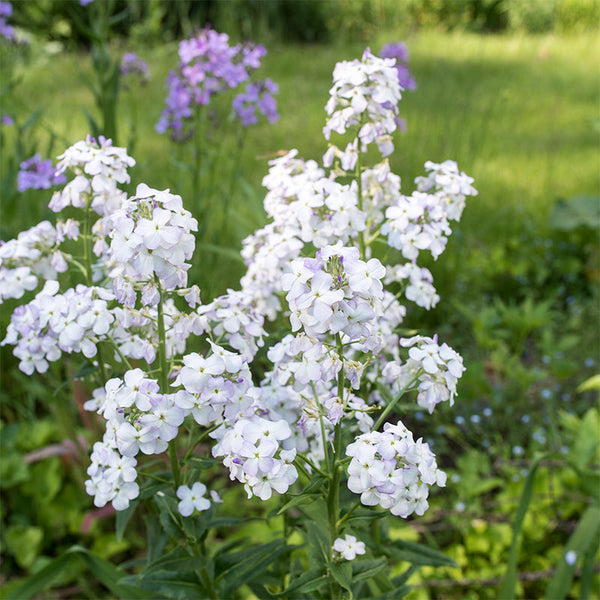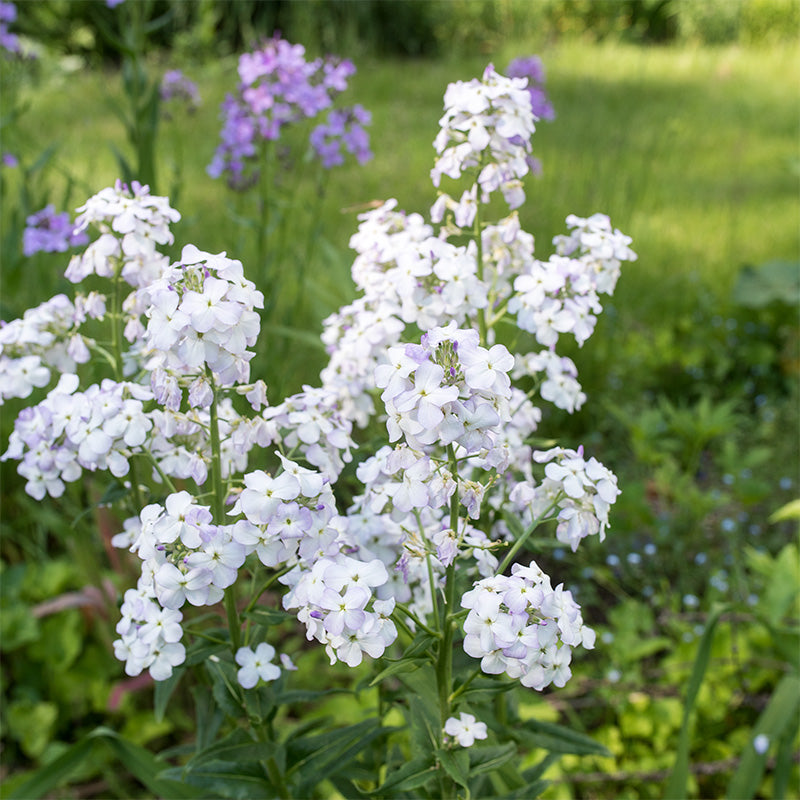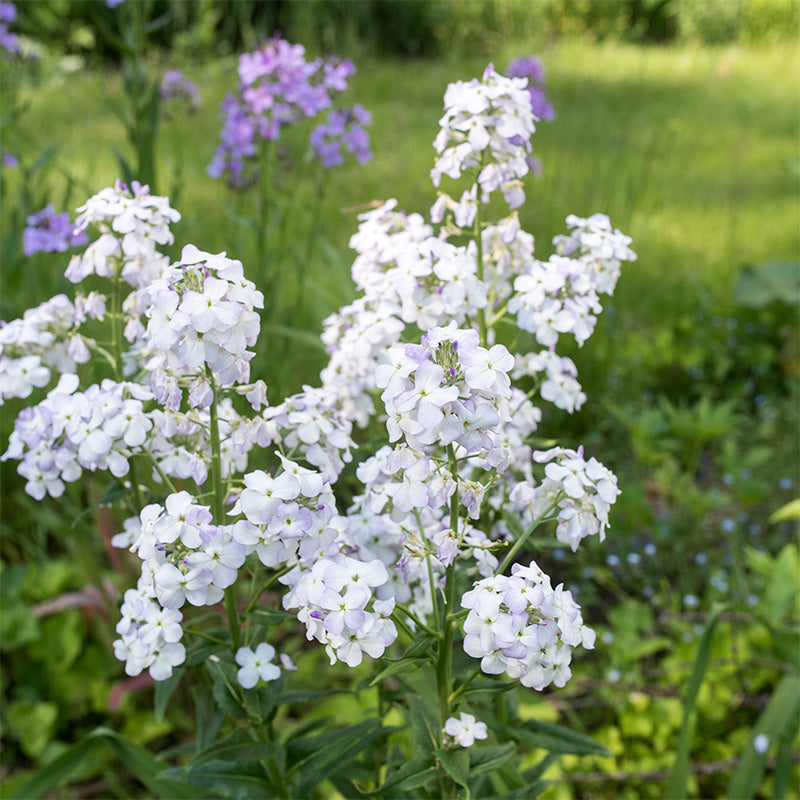SOWING INSTRUCTIONS
Starting Indoors:
Start seeds in containers 8 weeks before planting out. Keep at 60-70°F and cover with a light sprinkling of vermiculite or a humidity dome to retain moisture until germination occurs.
Starting Outdoors:
Sow direct after danger of frost has passed until midsummer.
WHEN TO SET OUTSIDE
After all danger of frost has passed.
PLACEMENT & CULTIVATION
Often mistaken for phlox, sweet rocket graces evening gardens with their full blooms releasing a delightful fragrance reminiscent of violets and cloves. This captivating scent is also an irresistible lure for night pollinators, mainly moths. Once seeds have matured, I pull them up, stripping the ripe seeds to scatter about into the bed and start new plants for the following year's blooms. However, it is worth noting that sweet rocket is considered invasive in certain regions. To prevent its spread into wild areas, position this plant in a garden bed bordered by a lawn that is sequestered from native habitats.
Watering Details:
Keep moist but not saturated; about 1" per week.
Fertilizer:
Mix in a balanced organic, granular fertilizer each spring. Alternatively, a couple of inches of compost can be incorporated into the soil.
Diseases & Pests:
No major pests or diseases. This plant self-sows prolifically and can become invasive in some locations,including in the Midwest.
When to Cut for Bouquets:
Cut when 3/4 of florets are open.
































